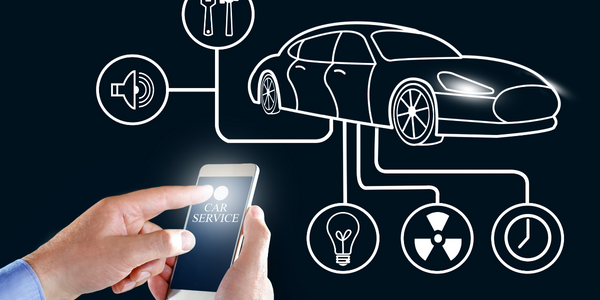公司规模
Large Corporate
地区
- Europe
国家
- Italy
产品
- Forcepoint Email Security
- Forcepoint Web Security
- Forcepoint DLP Discover
技术栈
- Cloud Computing
- Data Protection
- Email Security
- Web Security
实施规模
- Enterprise-wide Deployment
技术
- 网络安全和隐私 - 云安全
适用功能
- 商业运营
用例
- 网络安全
服务
- 网络安全服务
- 云规划/设计/实施服务
关于客户
Comdata Group 是一家创新的全球领导者,提供与客户互动相结合的管理服务,遵循独特的客户互动和流程管理方法。自 1987 年以来,该公司一直致力于帮助客户实现客户价值最大化,通过一支由 50,000 多名充满热情的员工组成的团队,他们在四大洲和 22 个国家/地区使用 30 种语言工作,将国际影响力与丰富的本地经验相结合。该公司提供全方位的客户互动和流程管理服务,从外包与客户的互动和流程到客户体验咨询,通过有效的人员、流程和技术组合实现一切。Comdata Group 总部位于米兰,营业额约为 10 亿欧元,拥有 670 多家客户,其中包括电信、能源、银行、工业、零售和电子商务领域的一些最重要企业。
挑战
Comdata Group 是客户互动和流程管理服务的全球领导者,随着公司通过收购向海外扩张,在保护敏感和关键数据方面面临着重大挑战。该公司认识到,将重点放在与战略计划、经济或生产趋势综合相关的最有价值的信息层面非常重要。他们需要克服现有的开源解决方案,这些解决方案在维护和专用资源方面负担沉重,并为能够提供更高自动化和持续发展的技术腾出空间。这些解决方案需要迅速应对不断演变的威胁,并通过云组件在移动方面提供保护。
解决方案
Comdata 选择 Forcepoint 作为其理想合作伙伴,是因为 Forcepoint 几乎完全满足了他们的需求,并且安装和调试速度极快。最初实施 Forcepoint Web Security 之后,又实施了 Forcepoint Email Security。最近,这些解决方案又增加了 Forcepoint DLP Discover,以确保无论用户身在何处都能更准确地保护数据,从而更好地满足越来越多在旅途中或在家办公的管理人员的需求。为了保护管理人员的工作成果并保证有效和充分地访问关键数据,Comdata 必须始终考虑人为因素。Forcepoint Human Point System 为 Comdata 提供了解决方案,可以跟踪管理人员的行动并提供最大的运营灵活性。
运营影响

Case Study missing?
Start adding your own!
Register with your work email and create a new case study profile for your business.
相关案例.

Case Study
Enel Secures Italian Power Generation Network
Electric energy operators around the world are working to increase the reliability and cyber resiliency of their systems. This includes Enel, a global power company that manages and monitors the Italian power grid. This grid:• Serves 31 million customers• Has a net installed energy capacity exceeding 31 gigawatts• Includes more than 500 power generation plants,including hydroelectric, thermoelectric, and wind• Is managed and monitored by Enel 24/7/365• Is operated by Terna, the Italian Transmission System Operator (TSO)Enel is responsible for the availability of the grid’s underlying ICS and industrial network. It also manages Regional Control Centers and Interconnection Centers which connect with the TSO. The TSO manages the flow of energy to the grid plus controls and remotely regulates the power generation of power plants, increasing and decreasing power production as required. The complex system of interaction and cooperation between Enel and the TSO has strong security implications as well as operational and business challenges.

Case Study
Securing the Connected Car Ecosystem
In-vehicle communications and entertainment system hosts high-value or sensitive applications. API libraries facilitate communication and sharing of vehicle data. These API libraries are vulnerable to reverse engineering and tampering attacks and may even result in loss of passenger safety. Attackers can inject malware that may be able to migrate to other in-car networks such as the controller-area-network (CAN) bus which links to the vehicle’s critical systems. Software provided for dealers to interface with cars through the OBD2 port is vulnerable to reverse engineering and tampering attacks. Hackers may be able to abuse these tools to inject malicious code into the ECUs and CAN bus. Attackers can lift the cryptographic keys used, and use that to build their own rogue apps/software. Their cloned version of the original app/software may have altered functionality, and may intend to gain access to other in-car networks.

Case Study
Secure and Cloud-based Data Marketplace
The great promise of new connected concepts of industry like 'Industry 4.0' is their ability to deliver a historically unparalleled level of responsiveness and flexibility. While modern supply chains are already heavily integrated and designed to be fluid and fast moving, a large swathe of manufacturing still remains beholden to economies of scale, large production runs, and careful preplanning.The Industrial Internet of Things (IIoT) is set to change this by allowing small-batch or even custom manufacturing on a truly industrial scale. With machines whose functions are not set in stone, but flexible and determined by their operating software and with a new form of connectivity bringing industrial engineers, product manufacturers, and end users closer together than ever before. Ad-hoc adjustments to automotive parts, for example, during active product runs or the bespoke manufacturing of custom sneakers become very viable options indeed.Much of this remains a theoretical vision, but IUNO, the German national reference project for IT security in Industry 4.0 demonstrates the new capabilities in action with a secure technology data marketplace running a smart drinks mixer.

Case Study
Expedia Hosted by 2lemetry Through AWS
Expedia is committed to continuous innovation, technology, and platform improvements to create a great experience for its customers. The Expedia Worldwide Engineering (EWE) organization supports all websites under the Expedia brand. Expedia began using Amazon Web Services (AWS) in 2010 to launch Expedia Suggest Service (ESS), a typeahead suggestion service that helps customers enter travel, search, and location information correctly. According to the company’s metrics, an error page is the main reason for site abandonment. Expedia wanted global users to find what they were looking for quickly and without errors. At the time, Expedia operated all its services from data centers in Chandler, AZ. The engineering team realized that they had to run ESS in locations physically close to customers to enable a quick and responsive service with minimal network latency.
.png)
Case Study
OTA Software Updates for Smart Energy (gridX)
gridX has a requirement for over-the-air software updates for their gridBox devices and used the Yocto Project for their builds. The driver for the requirement was having the ability to quickly support new features, as well as deploying bug fixed and path known security vulnerabilities. New software updates with a US stick manually to all gridBox devices in the field would be prohibitively expensive and labor-intensive.

Case Study
Transformed IT Infrastructure Improves Business Agility
A global security, storage, and systems management software provider planned to demerge into two separate companies. To prepare, it undertook a major overhaul of its IT infrastructure and operations strategy. A key requirement: streamlining the Hosting Group, which handled compute, storage, and middleware operations. These functions had grown complex and had a wide geographic distribution. The company planned to bring them under closer in-house management.The company looked to increase its business agility so it could quickly and creatively respond to customer demands with improved internal collaboration and optimized go-to- market and IT service delivery capabilities. Modernizing IT functions, and making them more responsive, was critical to achieving these goals.



